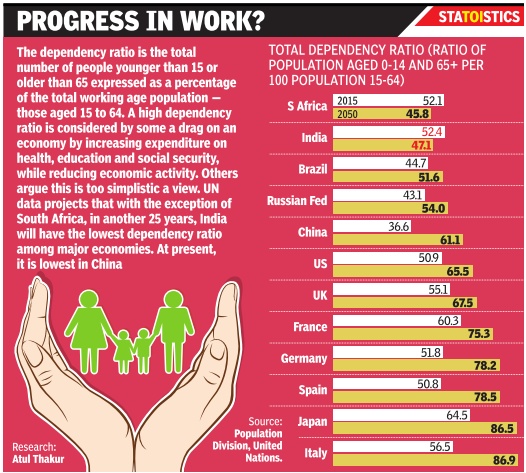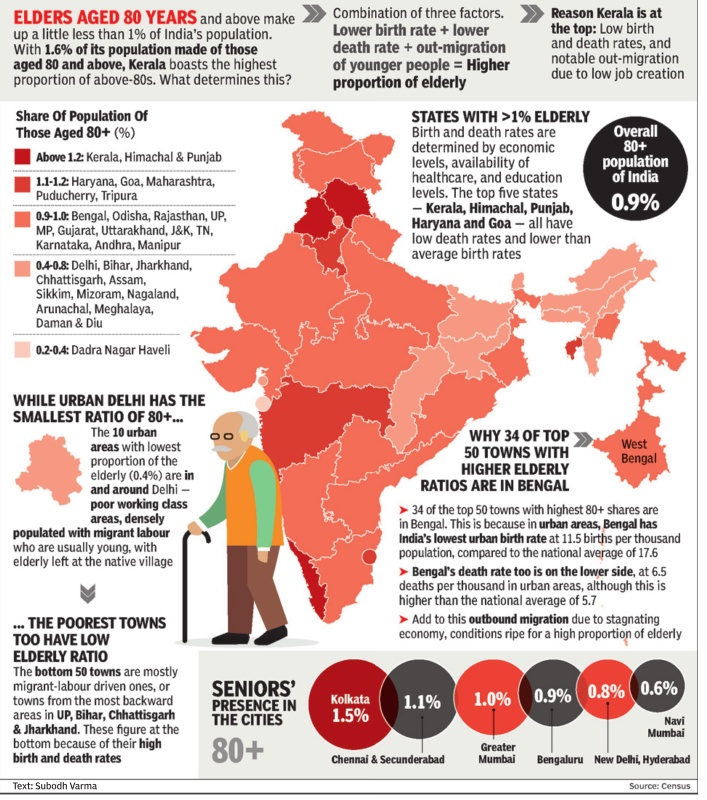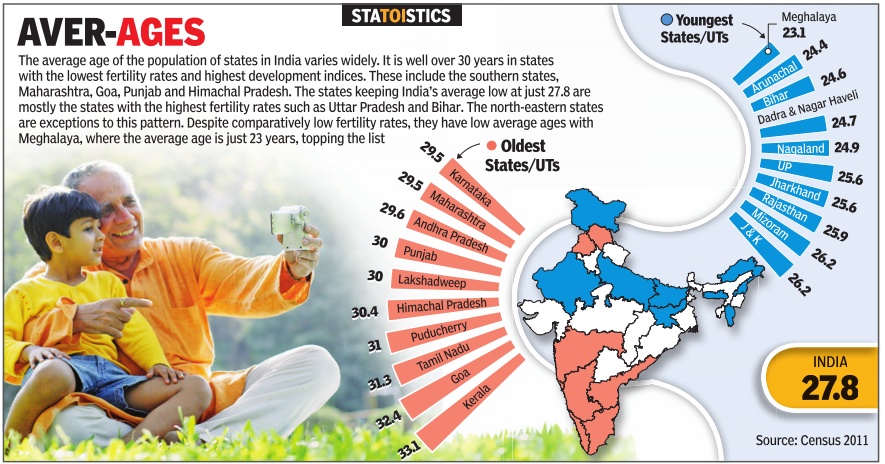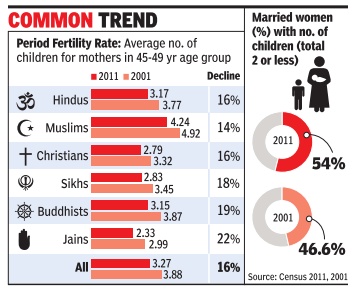Demographics: India



This is a collection of articles archived for the excellence of their content. Readers will be able to edit existing articles and post new articles directly |
Contents |
Birth-, Death-, Natural Growth-, Infant Mortality-, Total Fertility Rates
1972-2011

From: The Planning Commission
See graphic:
Birth Rate, Death Rate, Natural Growth Rate, Infant Mortality Rate & Total Fertility Rate by Residence for States/UTs (1972 to 2011)
Youth edge
Youth edge not an Indian monopoly
Even Pak, Nepal Have Lower Average Age
Rema Nagarajan | TIG 12/03/2007
New Delhi: Much has been made of India’s large young population. Nearly 70% of India’s population is less than 35 years of age and reams have been written about how young India is. Yet, India is nowhere near having the lowest median age in the world.
The list of countries with the lowest median age is dominated almost entirely by African nations, although it is for all the wrong reasons. A look at life expectancy in most of the African nations provides a clue to why they are the youngest countries.
Very high prevalence of HIV/AIDS in many African countries, particularly in the south, seems to be taking a heavy toll. Few African countries have an average life expectancy beyond 50 years. In fact, of the 10 countries that form the southernmost part of the African mainland, seven have an average life expectancy of 40 years or less. In the case of Swaziland, it’s as low as 32.6 years.
The others have a life expectancy marginally above 40 years — Namibia tops with 43.4. With a few among the population living beyond their 40s, it’s no wonder that the median age of these countries are the lowest in the world — ranging from 15 years in Uganda to 18.6 in Rwanda.
In fact, 41 of the 50 youngest countries are African. But again, in most cases, this is essentially due to very low life expectancy. Having a young population because most die before they are even middle-aged cannot be an advantage, so it’s better to compare countries which have life expectancy of at least 60 years.
Even by this yardstick, however, India is nowhere near being the youngest nation. Of the 215 nations for which data on both median age and life expectancy is available, there are 47 which have a life expectancy of above 60 and a median age lower than India’s 24.9 years.
Many of these are very small nations like Sao Tome and Principe or Mayotte, but the list includes several not-so-small countries like Oman, Iraq, Pakistan, Tajikistan, Nepal, Bhutan, Cambodia, Syria and Nicaragua — all with median ages ranging from 19 to 21 years.

2011: The average age of Indian states

India’s median age is much above Bangladesh’s 22.2 or Egypt’s 24. In fact, most countries in West Asia and Central America figure in the list of countries with lower median ages than India, and reasonably high life expectancy.
Number of children: 2011
The Times of India, Mar 02, 2016

Subodh Varma
Now, majority of families have 2 or less kids
For the first time in the country's recorded history, more than half the families do not have more than two children, according to Census 2011 data released. About 54% married women reported having two or less children, significantly up from the 46.6% two-or-less children mothers counted by the previous Census in 2001, reflecting a pan-India desire for smaller families.
There were about 34 crore married women who had about 92 crore children in 2011: an average of about 2.69 child ren per married woman. In 2001, the corresponding figures were 27 crore married women having 83 crore children at an average of 3.03 children per woman. The dip in the average number of women is the sharpest compared to earlier decades.
Another feature is that women are deferring child birth to later years. Among women in the 20-24 years age group, 35% had no child in 2011 compared with 32% in 2001, and in the age group 2529, 16% had no child compared with 13.4% in 2001.
As a result of these changes, the period fertility rate -the average number of child ren that a woman in the age group 45-49 years has ever borne -has declined by a drastic 16% between 2001 and 2011. The fertility rate of women between 45 and 49 years, that is, when their child bearing days are over, is considered a standard measure by demographers for defining average fertility.
The 14% decline in Muslim fertility rate is significant because in the previous decade (1991 to 2001) the decline was only 5%. So it appears that Muslim families too are quickly catching up with other communities, impelled by similar economic and social considerations.